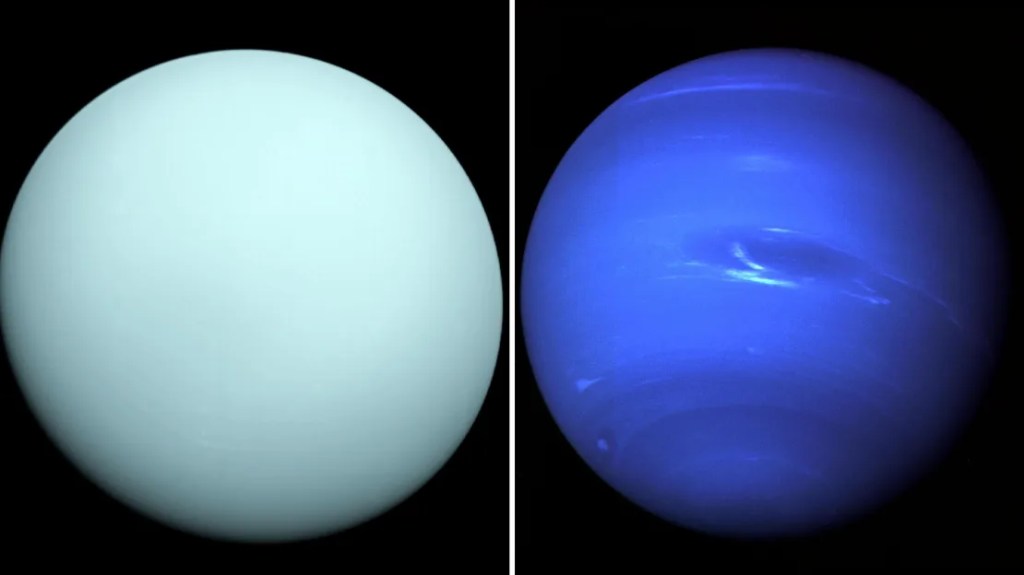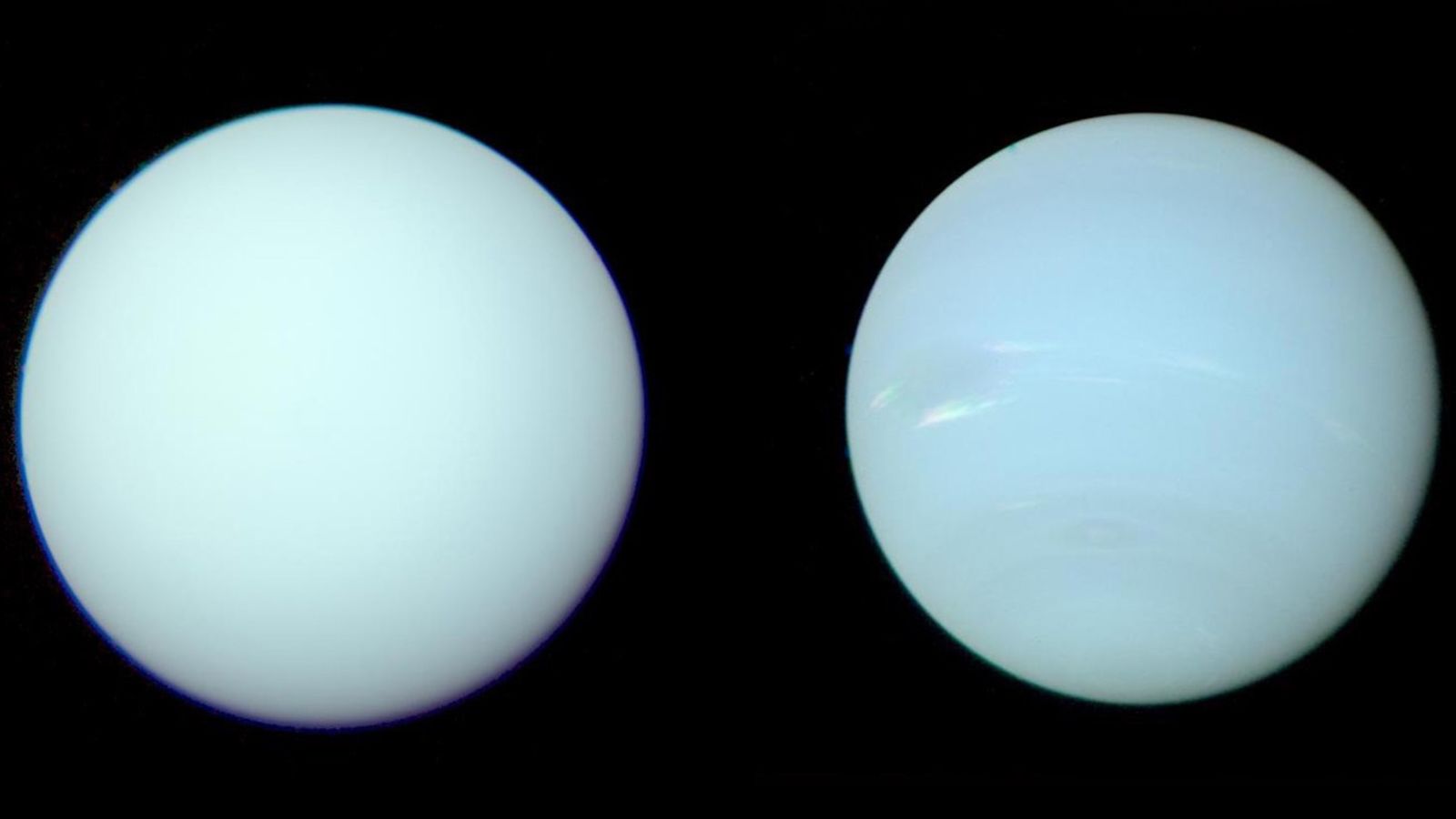(CNN) — New research has found that the true colors of Neptune and Uranus, which often appear in images with strikingly different hues, may be more similar than previously thought.
The first detailed views of the two ice giants at the outer edge of our solar system were made possible by NASA's Voyager 2 mission, which flew by Uranus in 1986 and Neptune in 1989. Voyager 2 is the only spacecraft to fly over both. worlds.
Uranus appeared as a pale cyan, while Neptune was depicted as a dark blue. Voyager 2 captured images of each planet in separate colors, and the single-color images were combined to create composites. Images of Neptune were enhanced to show the white clouds and wind of the planet's atmosphere.
“While the well-known images of Uranus taken by Voyager 2 were released in a form close to the 'true' color, the images of Neptune were actually stretched and enhanced and artificially made too blue,” Irwin said. , professor of planetary physics at the University of Oxford and author of the new study on the images, in a statement.
“Although artificially saturated color was known to planetary scientists at the time, images were published with captions explaining it, and over time the distinction was lost.”
The Hubble Space Telescope's Imaging Spectrograph and the Large Telescope's Multi-Unit Spectroscopic Explorer instrument capture a spectrum of continuous colors, resulting in high color accuracy. Irwin and his team applied the data collected using those instruments to the original Voyager 2 images.

Voyager 2 captured the first detailed images of Uranus (left) in 1986 and Neptune in 1989.
The edited images show that Neptune and Uranus have a similar blue-green color. Both planets have atmospheric haze, but Neptune appears a little bluer because it has a thinner film.
“By applying our model to the original data, we were able to reproduce a very accurate representation of the color of Neptune and Uranus,” Irwin said.
The team's results and the new image, published Thursday in the Monthly Notices of the Royal Astronomical Society, not only address a long-standing question about the ice giants, but also pave the way for a better understanding of the enigmatic planets, researchers say.
The changing colors of Uranus
While solving one planetary mystery, the research team took the opportunity to answer another: Why does Uranus change color as it orbits the Sun, as shown in the image below?
A year on Uranus lasts 84 Earth years. Although the planet appears green during the summer and winter solstices, it has a blue hue during the equinoxes.
This unusual world spins on its side, so one of the planet's poles points toward Earth and the Sun during the ecliptic.
When comparing images of Uranus for the study, the researchers looked at measurements of the planet's brightness recorded by the Lowell Observatory in Arizona between 1950 and 2016.
The team developed a model that compared light data from the polar regions to the equatorial regions and determined that the polar regions reflect more green and red light wavelengths. The model includes the inclusion of a gradually thickening “hood” of fog composed of methane ice, which is observed as the planet moves from equinox to solstices.
“In this way, we've shown that Uranus is greener at the solstice because the polar regions have less methane but a greater thickness of brightly scattering methane ice particles,” Irwin said.
Dr. Heidi Hummel, vice president of science at the Association of Universities for Astronomical Research, has studied ice giants for decades.
“Neptune's color misunderstanding and Uranus' unusual color changes have plagued us for decades,” Hammel, who was not involved in the study, said in a statement. “This comprehensive study should finally put both issues to rest.”
Exploring the Ice Giants
There are many mysteries about the ice giants. The James Webb Space Telescope recently released a new portrait of Uranus that reveals its often-invisible rings and hidden features of its atmosphere.
In recent years, researchers have detected X-rays coming from Uranus. Scientists detected a strange “blink” in the Voyager 2 data, indicating that the spacecraft flew through a plasmoid, a giant magnetic bubble that could rip off part of the planet's atmosphere and float it into space.
“A mission to explore the Uranian system — from its peculiar seasonal atmosphere to its diverse rings and moons — is a high priority for the space agency in the coming decades,” said study co-author Lee Fletcher, a planetary scientist at the university. Leicester, in a statement.
“Ground-based studies like these, which show how the appearance and color of Uranus have changed over the decades in response to the solar system's peculiar seasons, will be essential for putting the findings of this future mission in their broader context.”






